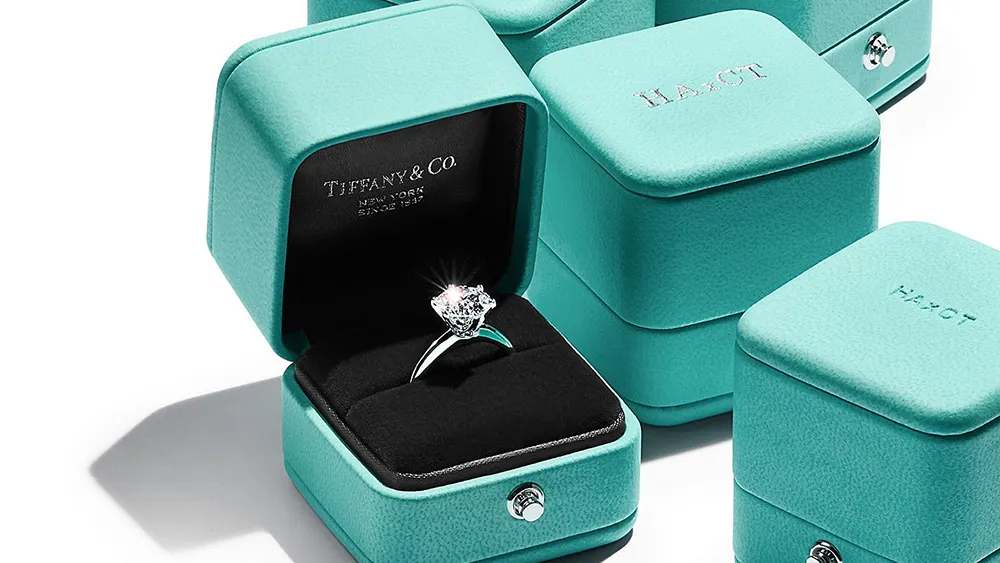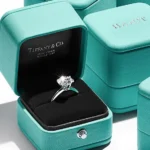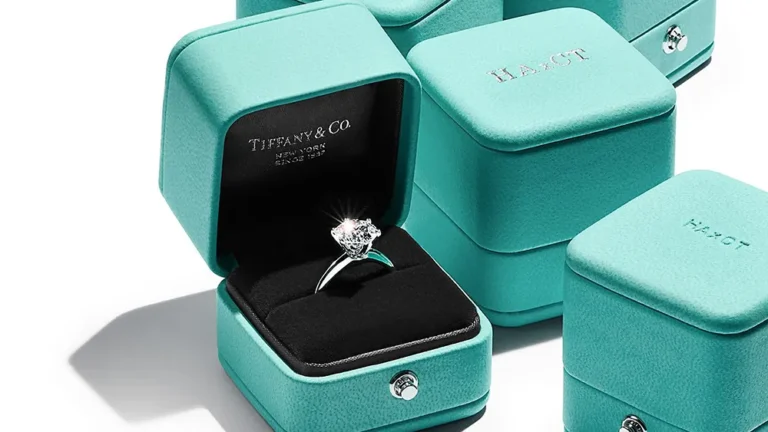As we delve into the specifics of this vital component of your branding strategy, this resource will assist you in understanding the significance of design and marketing in advancing your brand.
We’ll assist in distinguishing between marketing and branding material and elucidate the relative importance of each to your company.
To aid in your understanding of the topic, we’ll also provide you with some outstanding design examples.
What Is It Brand Collateral
The whole set of material and digital resources used to uphold and advance a business’s brand identity is known as brand collateral.
It may be seen as the visual components that provide prospective clients with a memorable first impression.
Several of these brand collateral items are well-known to you:
We see identifiable infographics, email signatures, letterheads, and business cards that provide brand coherence and continuity.
These tangible and digital assets help your marketing campaigns and communicate your brand identity to stakeholders and prospective customers.
Marketing collateral differs from Brand Collateral.
What distinguishes marketing collateral from brand collateral? It is imperative that you make this difference accurately.
Marketing material is focused on advertising your goods or services, while brand collateral establishes and preserves your brand’s image and experience across all touchpoints.
As such, there is a strong relationship between marketing collateral and brand collateral.
While marketing collateral makes use of brand guidelines and material to activate the brand’s message via marketing communications, brand collateral concentrates on the visual aspects of your brand.
Definition of Brand Collateral
Now let’s clarify this term.
The collection of material and digital resources that bolster and advance a business’s brand strategy—which includes verbal and visual communication in addition to the marketing plan—is known as brand collateral.
These materials are essential for guaranteeing brand identification and consistency among stakeholders and prospective customers. They may be anything from traditional business cards to website designs and even mobile applications.
What Makes Brand Collateral Vital?
There are several reasons for stressing the significance of brand collateral.
Your business won’t leave a lasting impact on your target audience if you don’t have appropriate brand material.
Keep in mind that the important initial impression that may make or break your prospects with potential clients is heavily influenced by the collateral for your brand.
The foundation of your marketing communication and strategy is your brand material.
while taken as a whole, these visual components support the development of brand awareness, improve brand recognition, preserve brand identity, and improve the general consumer experience while interacting with your business.
Have you ever wondered why some brands seem to fit so well?
Consistency in the brand’s collateral creates a sense of stability and trust, which in turn affects how we perceive the brand and its function in our lives.
Let’s dissect it and look at five particular instances.
Initial Impression Counts
Whether it’s right or wrong, humans tend to pass judgment on other people easily.
The brands we come across operate in a similar manner. That’s simply how people are.
We are wired to believe that first impressions matter.
Because of this, having a unified and well-presented brand across all of your marketing materials can help you create a lasting impression on prospective clients.
The Secret Is Consistency
Maintaining a human perspective on your brand is beneficial.
Your brand would have a unique voice, style, and personality if it were a person.
When considering a brand in this manner, it becomes evident how unsatisfactory inconsistent aspects would be; if your buddy began behaving or speaking differently, you could tell straight away.
Maintaining consistency in your brand collateral—such as typefaces, color schemes, and logos—across all marketing pieces helps to strengthen your brand identity, accentuate stability, and reassure your consumers.
Establishing Trust
Your brand communicates credibility when it is presented with polished, unified material.
Sometimes it’s easy to pay attention to little details. But it doesn’t disappear, for sure.
Because they are comforted that your brand is genuine, this credibility increases the attraction of your brand and fosters audience trust.
Distinctiveness
In an ocean of rivals, how can you make an impression?
Collateral for your brand that is distinctive and well-designed may help set it apart from the competition and provide you the advantage you need to draw in customers.
Client Relationship
When your message, images, and general vibe are all in harmony, you provide your consumers with a smooth, pleasurable experience that increases the likelihood that they will return and refer others to you.
Providing a unified and consistent experience via your offerings is a critical first step in developing brand loyalty.
Comparing Digital and Traditional Brand Collateral
Print advertisements, catalogs, and signs are examples of traditional brand material that still has a role in a branding strategy.
However branding must constantly adapt to the location of the audience.
Digital brand material is thus becoming more and more common.
Consider website design, email marketing templates, and social media visuals.
It’s crucial to keep in mind that both kinds of collateral are essential to a comprehensive branding and marketing plan, even as the world becomes more digitalized.
Print Brand Collateral Examples
Printed brand collateral in the traditional sense has been around for many years.
While certain forms of printed collateral—like direct mail collateral or printed newsletters—have become obsolete, others are still making a lot of effort to provide prospective clients with vital information.
Business cards are still a popular way to create a first impression at trade shows. Interestingly enough, however, a lot of them now include a QR code to point prospective buyers to a digital resource.
A chic and polished method to showcase your brand in formal correspondence is via letterhead.
Catalogs: A tactile catalog still has a certain appeal for many individuals. Display your goods with an eye-catching, easily navigable branded catalog.
Signage: Vibrant, striking signage that sometimes includes your logo makes it easier for consumers to discover you and support the identity of your business. For easy visual identification, your brand’s color palette is often used on signs.
Trade fair supplies: Use banners, posters, and other visually striking print items to draw attention to your exhibit.
Examples of Digital Marketing Materials
The foundation of digital marketing material is maintaining an online presence and interacting with your audience. They can be shared and monitored with ease, making them ideal for SEO and content marketing campaigns.
Social media graphics: Reliable and captivating images to bolster your content marketing campaigns.
Email templates: Well-crafted, businesslike emails that highlight the essence of your company.
Landing pages: Converting prospective buyers is greatly aided by a well-designed, cohesive landing page. Your brand identity should always be reflected on your landing pages.
Virtual business cards: Electronic substitutes for real business cards that make it simple to provide contact details online.
Infographics: aesthetically pleasing and educational images that support the narrative of your company.
Branded Explainer videos are excellent films that highlight the benefits of your goods and services.
Exceptional Brand Collateral Examples

Apple’s product packaging: The company’s emphasis on beauty and simplicity is reflected in the sleek, simple designs of its packaging.
Mailchimp’s mascot, Freddie: Freddie is a strange yet endearing mascot that appears on a variety of promotional materials, highlighting the lighthearted tone of the company.
The distinctive blue boxes that are synonymous with Tiffany & Co. are known worldwide as the Tiffany Blue Box®, and they stand for elegance and refinement.

The user experience is improved by LEGO’s visually beautiful, easy-to-understand instruction manuals, which are a great addition to the product.
Twelve Types of Marketing Collateral for Each Funnel Stage
Signature Pieces for Every Marketing Phase
Customers should be served by your brand material at every point of the purchasing process.
A consumer who is about to make a purchase wouldn’t benefit from the same piece of brand material you would provide to them, and vice versa.
The many kinds of collateral that should be used at each step of the buyer’s journey are broken down below.
1. Consciousness
At this point, you’re introducing your brand strategy to prospective customers.
At this point, your target customer may not even be aware that your brand exists.
Utilize premium materials, such as infographics and social media postings, to generate a strong first impression, stick in the minds of people, and pique their curiosity about your business.
Social media graphics: Use eye-catching images to help stand out from the competition and enhance your brand’s online visibility. Strong graphics may increase interaction and make an impact that lasts, particularly in an environment where a plethora of competing companies are fighting for consumers’ attention.
Blog posts: Provide insightful analysis and industry information relevant to your online specialty. This keeps people interested in your brand and helps you establish authority, credibility, and trust as a go-to source.
Infographics: Use eye-catching visuals to graphically represent complicated facts and communicate engaging tales. By assisting your audience in comprehending and remembering important details, these bite-sized pieces of visual material help them develop favorable associations with your business.
SEO-optimized website content: By creating material that is both user-friendly and search-engine-optimized, you may increase your website’s searchability and attract more prospective clients. Your superb digital brand material is seen by more prospective consumers as a result of this improved exposure.
Educational videos: In today’s world, marketers are placing a greater emphasis on video content. Use dynamic video content to captivate, inform, and amuse your audience while showcasing the qualities and advantages of your goods and services.
2. Evaluation
Now that they are researching you, prospective clients are aware of the products you provide.
They are still considering their options, however, and are not quite done searching.
In this situation, you must provide marketing materials that encourage prospective buyers to choose your company over rivals.
Provide in-depth case studies, white papers, and endorsements that highlight your value proposition, competence, and social proof.
Case studies: The 2023 Edelmen trust barometer indicates that mistrust is on the rise in our society. Peer evaluations play a crucial role in influencing consumers’ decision to contact companies since they often have a distrustful view of brands. Present real-world success stories to prospective clients in order to establish the efficacy of your goods and services.
White papers: Present comprehensive, scholarly analyses of market trends and obstacles, establishing your company as a forward-thinking problem-solver and thought leader.
Testimonials: Highlight the excellent experiences your business consistently provides for other consumers to amplify the power of word-of-mouth marketing.
Product comparisons: Highlight the special qualities and advantages of your offers over other brands to help potential customers make well-informed judgments.
Webinars: Use live, interactive presentations to showcase your brand’s knowledge and value while also engaging, educating, and fostering connections with your audience. With the use of webinars, you can have direct conversations with prospective clients, giving your business a face and the much-needed human touch.
3. Resolution
Time is of the essence! In this case, winning a prospective consumer over to your brand is everything.
At this critical stage, provide price facts, contact details, and comparisons to assist buyers in making an educated decision.
Pricing information: State the value proposition of your product succinctly and clearly. Don’t overcomplicate things; instead, make it simple for prospective buyers to comprehend the exact costs involved in order to assist them in selecting the best solutions.
Detailed product specifications: You should make information accessible to customers so they may learn more about your goods or services if they so want. Give potential customers thorough and honest information about your goods and services so they may assess their appropriateness. Consider something like the comprehensive product specifications that you may peruse for the Apple iPhone, as an example.
Custom quotes: To demonstrate your adaptability and dedication to client pleasure, provide customized price alternatives that are suited to each client’s particular demands and budget.
PowerPoint sales presentations: With visually beautiful, succinct, and informative branded presentations that showcase your brand’s unique selling qualities, you may captivate and convince your audience.
Free trials or demos: Provide potential customers with an in-depth look at your goods or services so they can see the advantages for themselves and are more likely to convert.
4. Allegiance
After a consumer makes a purchase, the game is still ongoing.
A strong brand fosters a devoted following.
entice clients to return for more! In order to sustain attention and happiness, provide discounts, unique content, and captivating email marketing campaigns.
Email marketing campaigns: Use tailored, targeted email messages that provide value and emphasize specials to foster customer relationships, encourage repeat business, and keep your brand at the forefront of consumers’ minds.
Coupons or special promotions: Draw clients in with alluring offers and incentives to boost sales and foster a sense of brand loyalty.
Special material only for subscribers: Give your most devoted followers access to premium content to make them feel special and strengthen their bond with your company. You may even invest some effort in creating your own community around your business.
Surveys and feedback opportunities: Show your customers that you really respect their thoughts and experiences by encouraging their input to enhance your goods and services. If you choose this course of action, you must, of course, take the criticism seriously. You run the danger of harming your brand’s reputation otherwise.
Three Essential Steps to Creating Powerful Brand Collaterals
Clearly specify your brand’s colors, typefaces, and general aesthetic in a brand standards document that you should distribute to all relevant parties. To guarantee that everyone maintains uniformity across all marketing materials, this document is essential.
Determine your target market by learning about the characteristics and interests of your potential clients. This determines the kind of collateral you should make and increases the likelihood that the print and digital materials you produce will be appealing to them.
Work collaboratively with your sales and marketing teams to develop material that will help them in their endeavors. They’ll have knowledge that will enable you to meet prospective customers’ wants at every turn in the buying process.
Final Thoughts
When it comes to developing a successful brand, your collateral is essential to producing a unified, distinctive identity that both current and future clients can recognize right away.
You can make sure your business stands out from the competition and leaves a lasting impression by devoting time and energy to creating superior, targeted brand material.
FAQs
Why do small firms need brand collateral?
Small companies depend on brand collateral to maintain their brand identity, increase customer satisfaction, and raise brand recognition.
I want to create brand material, can I simply utilize templates?
It’s best to spend some time and effort generating bespoke templates if you want your brand material to be distinctive and on-brand, but it’s also useful to look at what others are doing.
In this manner, you’ll distinguish yourself from the competition and leave a lasting effect on your intended audience.
Do I truly need collateral in print form?
Keep in mind print collateral for the time being. It may still be a part of your marketing mix, particularly for nearby establishments or occasions when your brand is seen in person.
Can my brand material include humor?
Of course! Adding a little comedy to your marketing material might help it become more memorable and engaging. Just make sure it stays relevant and consistent with your brand voice.
Recall that your goal is to establish a rapport with your audience, and comedy has always been a fantastic icebreaker.
How can I assess the effectiveness of my brand collateral?
Although it might be difficult to gauge the success of your brand collateral, there are a few telltale signs to watch out for. Pay attention to KPIs like as brand awareness, conversions, and engagement.
It’s probable that your marketing material is working if you see an increase in these areas!






![Brand Heritage Strategy [How To Evoke Emotion And Earn Trust]](https://naumandigital.com/wp-content/uploads/2023/02/11-600x400.jpg)
![What is Branding? [Easy Guide]](https://naumandigital.com/wp-content/uploads/2023/02/Logo_design_branding-1-600x400.jpg)
![What Is Lifestyle Branding [Steps to Create a Lifestyle Brand]](https://naumandigital.com/wp-content/uploads/2023/02/12-600x400.jpg)
